“Video Rewind” tells the BTS stories of VHS faves, one rental at a time! Press play and adjust your tracking for “Kull the Conqueror” (1997).
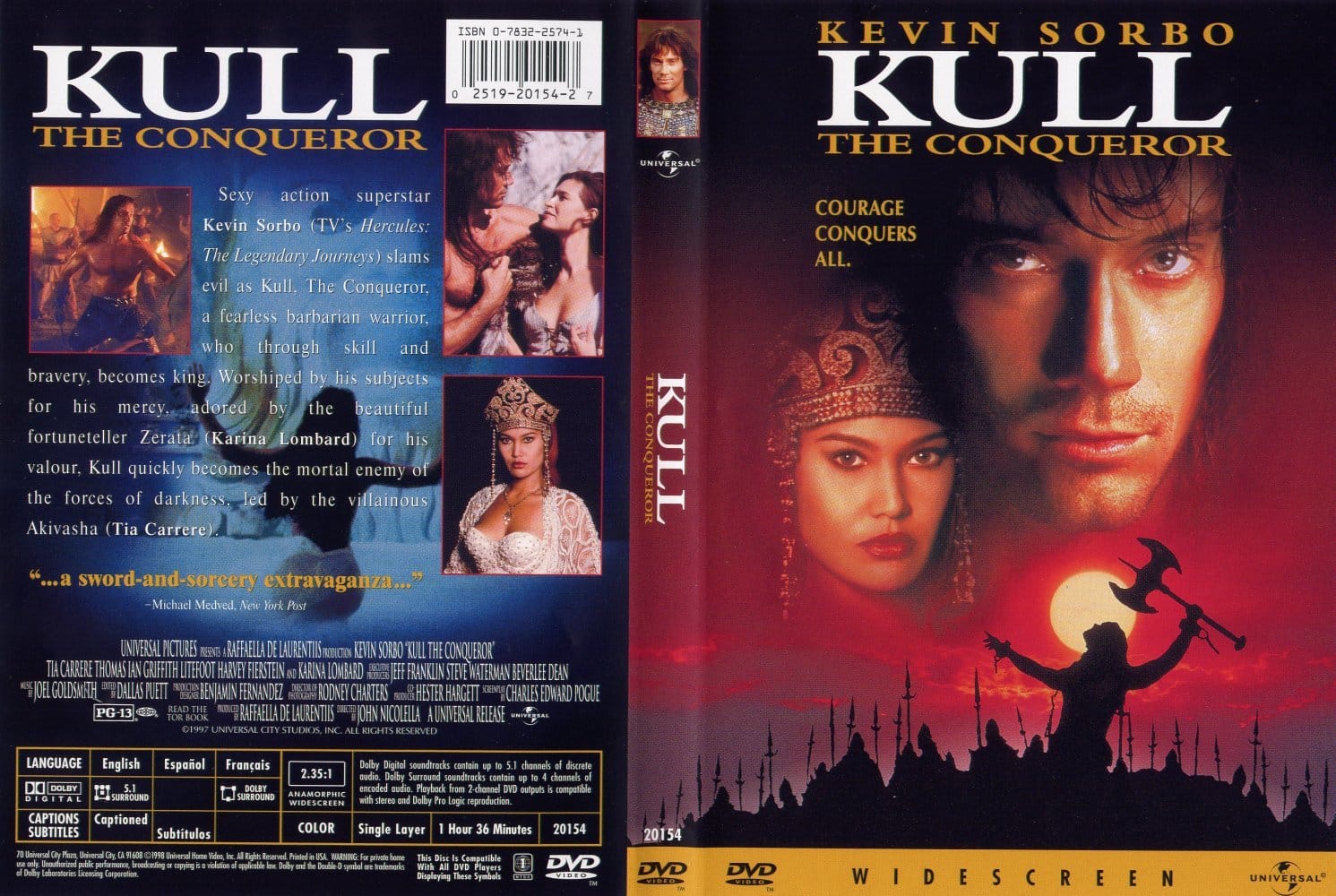
In the early 1990s, Kevin Sorbo was a thirtysomething actor trying to make it in Hollywood. Modeling for print ads, appearing in over 150 commercials, and having guest spots on shows such as Murder, She Wrote and The Commish, Sorbo was still searching for his big break.
In 1993, he learned of a new adventure-drama series being filmed for ABC, and, figuring he had the proper build and look for the part, decided to audition. The show had tremendous promise and the part was highly sought after, bringing in hundreds of actors auditioning for the role. Sorbo learned it was between him and one other actor, and he soon received a call from his agent. He got the part. Kevin Sorbo would be the new face of Clark Kent/Superman in Lois & Clark: The New Adventures of Superman.
Sorbo finally had his big break and was ecstatic about the possibilities the role would afford not only his career but his life. The role, however, was short-lived. One day after receiving the good news, Sorbo got another call from his agent. The producers changed their minds and decided to go with the other guy, Dean Cain (originally deemed too young-looking). Sorbo was crushed. Such are the ups and downs of working in show business.
Three months later another role presented itself, this time from USA Network. Again having the build and look for the part, Sorbo auditioned. He again received a call from his agent. He got the part. Kevin Sorbo would be the new face of Hercules in Hercules: The Legendary Journeys.
As Lois & Clark was halfway through its final season in late 1996, Hercules took the title from Baywatch as the most-watched show in the world.
Sorbo was enjoying major success and had become instantly recognizable the world over.
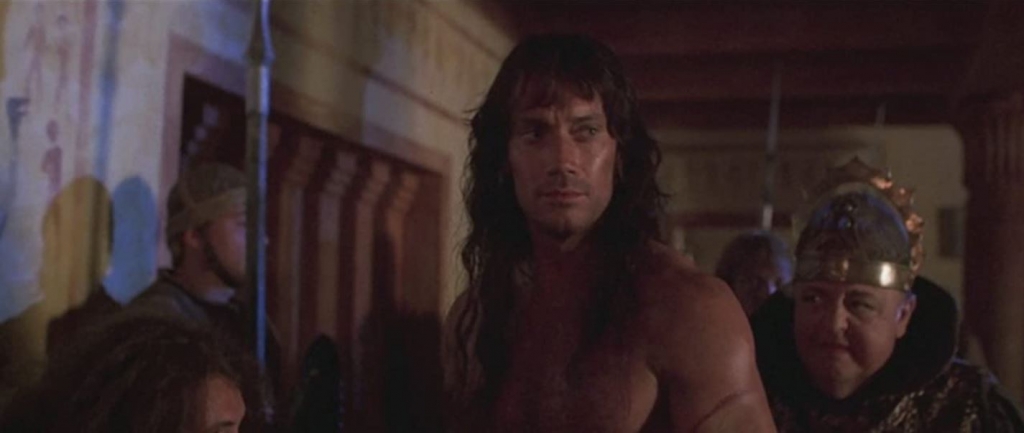
A move to the big screen was an inevitable next step in his career. Little did Sorbo know, his audition for Hercules not only won him that role but was key in winning his first feature film.
“Before I left Hollywood for Bratislava [Slovakia] to make DragonHeart,” said producer Raffaella De Laurentiis (Conan the Barbarian), “I saw Kevin’s audition videotape for Hercules and he made an instant impression on me.”
Having produced Conan and its 1984 sequel, Conan the Destroyer, De Laurentiis was instrumental in catapulting Arnold Schwarzenegger into the superstar he would become when he was cast in the lead role. In the early 1990s, De Laurentiis wanted to produce a third Conan film. The script, written by Charles Edward Pogue, focused on an older Conan, now king, who must stave off a rebel uprising to overthrow him by resurrecting an ancient, evil sorcerer.
De Laurentiis said that Arnold was interested in the film for a while, but ultimately decided he wasn’t ready “at the time to do another Conan picture and run around in a loincloth.”
“We knew going in we might not get Arnold and would switch over to Kull,” said screenwriter Charles Edward Pogue.
Kull of Atlantis first appeared in a story called “The Shadow Kingdom,” published in a 1929 edition of Weird Tales. Kull was the creation of Conan creator Robert E. Howard and the two characters occupied similar territory. Regarding the characters of Kull and Conan, Pogue added, “there was existing material that paralleled each character…So it was a fairly easy transition without exiting the plot and story of the script.”
And so, Conan the Conqueror became Kull the Conqueror.
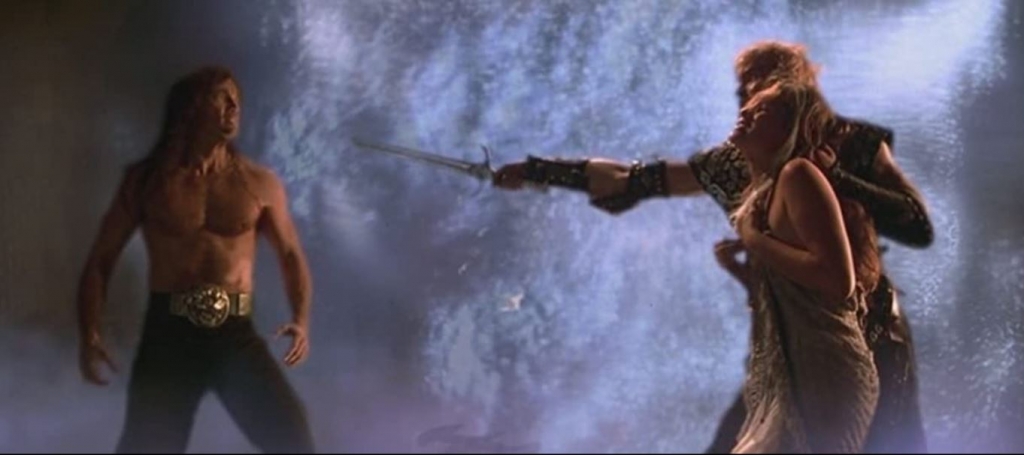
Kevin Hooks, who found success with Passenger 57 in 1992, was brought on as director.
He and producer Raffaella De Laurentiis along with Universal started a worldwide campaign to find the actor who would play Kull. The search was massive, receiving tapes from Europe, the United States, and even Australia. In these tapes was a promising audition from an actor named Thomas Ian Griffith, but the producers weren’t sold on the actor for the lead role (he ultimately landed the role of the villainous General Taligaro).
Five months into the search and the actor for Kull still hadn’t been found.
By this time, in July of 1994, producer De Laurentiis was off to Slovakia to film DragonHeart, and the search was put on hold. It wasn’t until February of 1995 that Kevin Sorbo did a screen test for Kull.
“I saw immediately that he brought a fresh, younger approach to the role,” said De Laurentiis. At 6’3” and 215 pounds, not only did Sorbo have the look needed for the character, but with Hercules: The Legendary Journeys climbing the TV rankings, it was an enticing idea to have a rising star in the lead role.
However, between Sorbo’s Hercules schedule and with De Laurentiis working post-production on DragonHeart as well as leaving to film Daylight with Sylvester Stallone, production on Kull the Conqueror would have to wait another year.
The deal with Sorbo wasn’t finalized until February of 1996.
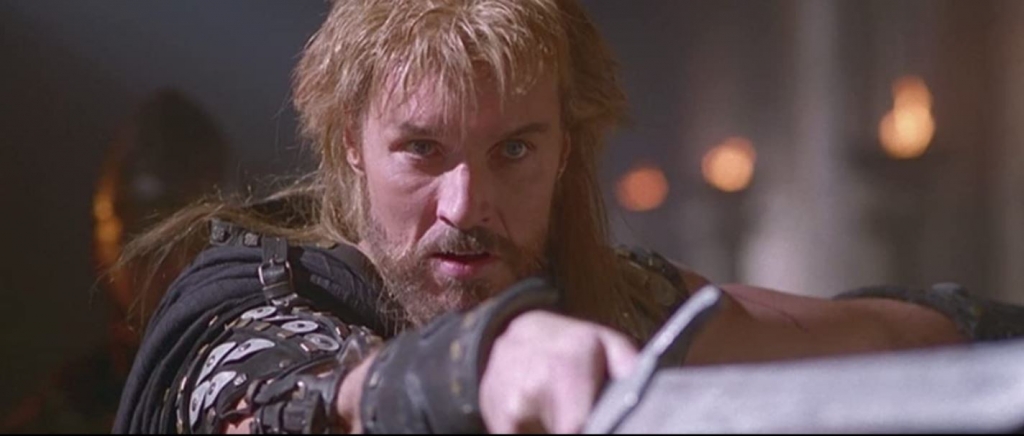
“I’ve always liked the Fantasy/Sci Fi genre,” said Sorbo. “I grew up watching STAR TREK OUTER LIMITS, and the reruns with Steve Reeves as Hercules.” Regarding his decision to sign on to play Kull, Sorbo said, “I took the role because it was the best of three scripts. It was the most complete project that was there in front of me.”
Meanwhile, due to the constant delays, director Kevin Hooks left the Kull project around mid-1995 to direct Laurence Fishburne and Stephen Baldwin in Fled. Kull may have found its star, but now the search was on for a director. Thankfully, it wouldn’t take nearly as long to find a director as it did to find Sorbo.
“I didn’t have the time to bond with an unfamiliar director,” said De Laurentiis, “so, I went with John Nicolella.”
De Laurentiis had worked previously with Nicolella in 1994 on Vanishing Son, an action-adventure TV mini-series that showed Nicolella was familiar with the genre and ready to handle the material in Kull. Nicolella previously served as producer on iconic ’80s TV show Miami Vice, and another Don Johnson show in the ’90s called Nash Bridges. In a prophetic coincidence, it was Nicolella who shot Sorbo’s screen test for Kull.
With cast and crew in place, Universal (the studio behind both Kull and Hercules), granted Sorbo four months off from his Hercules duties instead of the usual two to ensure Kull had proper time for principal photography.
Finally, in August of 1996, filming for Kull the Conqueror began in Slovakia and Croatia. The original Conan script was based on the Conan novel Hour of the Dragon. With the Conan character simply switched to Kull, the movie would focus on Kull, a barbarian warrior who slays a king in combat and in turn inherits the kingdom of Valusia.
The king’s nephew, Taligaro (Thomas Ian Griffith), is unhappy to lose the throne which he views as rightfully his. Taligaro plots to take back the kingdom with the help of an evil sorceress demon named Akivasha, who is resurrected from an ancient slumber. Akivasha has further plans to restore the evil kingdom of Acheron, where current Valusia now stands. Kull must journey to acquire the breath of the god Volka, the only thing that can stop the witchery of Akivasha and save his new kingdom of Valusia.
With the script calling for plenty of action, a lot of preparation was needed for the shoot.
Sorbo would have to learn to ride horses, and he started his lessons two months prior to filming.
“I’ve only been on them a few times,” said the actor. He would also have to hit the gym, something Sorbo did on a regular basis anyway. But his gym time now was with Jerry Poteet, a black belt fight choreographer trained by the legendary Bruce Lee (Poteet trained Jason Scott Lee for Dragon: The Bruce Lee Story). Both Poteet and his partner Fran Joseph flew to New Zealand to train Sorbo while he was still filming Hercules.
Once filming on Kull was underway, Sorbo was determined to prove himself in the role and worked hard to do so. He worked a minimum of 14 hours a day, six days a week, and did a lot of his own stunts. Stunt coordinator Paul Weston said the production was lucky to have him.
The production was also lucky to have Thomas Ian Griffith, whose years of experience working with swords and daggers in New York theater helped enhance the fight sequences.
“I don’t lose weight very easily because I work out all the time,” said Sorbo, “but I lost seven pounds during the filming of this movie. I was exhausted.”
The dark wig Sorbo wore for the shoot didn’t do him any favors. “The wig sucked to put on every day. It gave me a headache.”
Director John Nicolella was very pleased with the effort Sorbo put into his performance, as well as his willingness to push the envelope physically. “
He’s cool, he’s fun to work with. He doesn’t say no. I push, he says ‘fine,’ I push harder, he says ‘fine’.”
Sorbo also brings welcome humor to the film.
When Kull is to meet visiting royalty from surrounding kingdoms, one daughter of a king is introduced to him as being “pure as virgin snow.” Kull takes her hand and looks past her white veil to meet her acquaintance. “We’ve met,” he says to a royal staffer as he walks away, “she’s not that pure.” This line is delivered impeccably with the sarcastic lady’s man bravado in which Sorbo excels.
He’s quite funny, and this comedic ability coupled with his lean, chiseled physique makes Sorbo well equipped to portray a comic book character born from pulp novels and fantasy magazines.
Another such moment is when Ascalante (Litefoot), an ally of Kull, says, “your bride is almost 3,000 years old.” With spot-on, deadpan confusion, Kull remarks, “she said she was 19.”
Starring as Kull’s 3,000-year-old bride, the evil sorceress Akivasha, was Tia Carrere (Wayne’s World, True Lies). Carrere not only stuns with her fiery red hair but is also having an absolute blast playing the evil Akivasha.
“It’s so much fun exploring that darker side of human nature.”
It’s impossible not to have fun watching Carrere portray the wicked seductress.
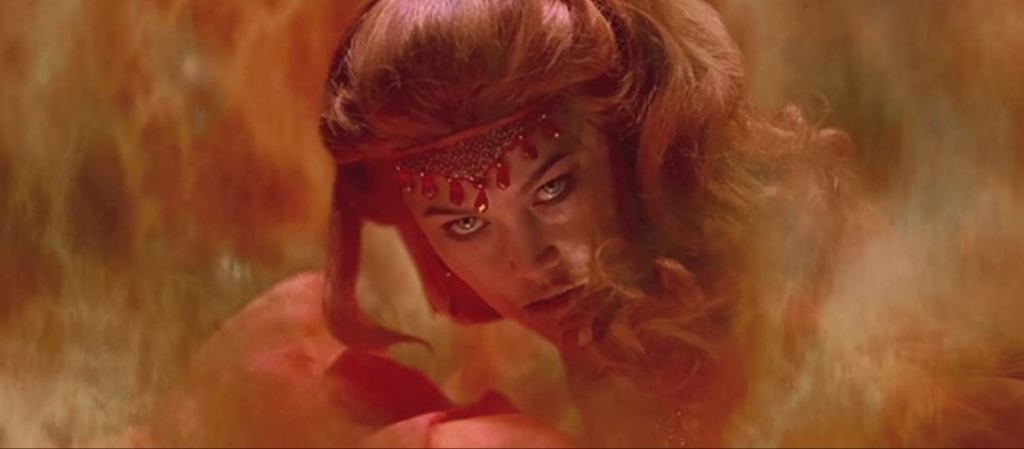
Carrere was originally offered the role of Zareta, a freed slave and Kull’s true love, but the actress said “when I read the script I was more drawn to Akivasha,” (the role of Zareta went to Karina Lombard, who caught Hollywood’s attention in 1994’s Legends of the Fall).
Complimenting Carrere’s hair was the flame-inspired dress designed by Emmy-winning costume designer Sibylle Ulsamer (Peter the Great). Carrere looks gorgeous in the dress of Akivasha, and praised Ulsamer saying such costumes help inform an actor’s performance. “It makes an actor’s job so much easier.”
While the costumes enhance the character, Akivasha’s flame-filled transformation sequence into the demon we know her to be is a mixed bag of special effects work.
It begins with great, imaginative practical effect prosthetics and makeup that early on resemble the demons in 1988’s Night of the Demons. This three-stage transformation process took multiple prosthetics applied at separate times in what was an all-day process.
With phase one of the transformation complete (and frankly where it should have ended), Akivasha then morphs into a less intimidating puppet that looks like the snake railing in Beetlejuice, and eventually devolves into a CGI enhanced puppet that is straight out of a Spirit Halloween costume catalog.
Akivasha floating in the flames as she begins to transform provides striking imagery. Carrere said this moment, suspended by wires with fans blowing her fiery dress in roaring flames to be added later was “a magical experience.”
It’s just too bad the filmmakers didn’t see the magic of the scene as well, before ruining it with special effects run amok.
Despite the disappointing transformation sequence of Akivasha taken unnecessarily too far by GGI, the rest of Kull the Conqueror is filled with hand-to-hand action and big, practical set pieces.
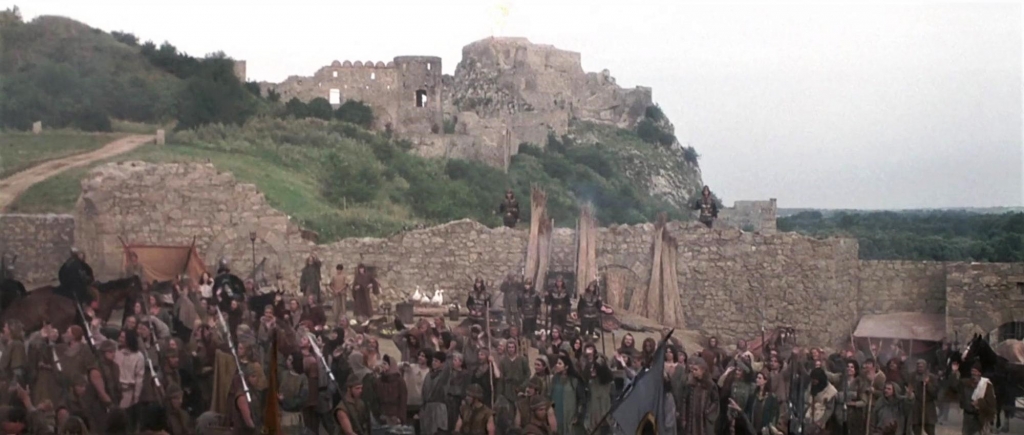
These were often very demanding on the actors and the production.
Most demanding of all were the water scenes filmed on the Adriatic Sea. Like Jaws and Waterworld before it, Kull suffered many of the same issues associated with filming on water. The boat would start to sink, the engine would stop working, gears would cease up, and shots would take longer to set up because everything is constantly moving. According to De Laurentiis, “waves, winds, and sharks,” also caused problems during the three weeks of filming on the water.
As for the actors, Lombard recalls being painfully strapped in a harness and dunked about 200 times in the water to complete a scene. When asked if he could swim, Harvey Fierstein (Kull’s shady friend Juba) of course said yes. But with all of his leather costuming totaling almost 50 pounds, the actor said, “the question isn’t can I swim, it’s can I swim with a cow on my back.” According to Sorbo, the movement of the boat was most problematic for the fight sequences. “
The jumping around and bashing heads and tweaking backs and hurting necks. You know, we took a lot of nicks and cuts. There were people with a few stitches on the show.”
Stitches aside, overall the production went well. The cast and crew celebrated Kevin Sorbo’s birthday in September and had a laugh doing so by reading aloud embarrassing, but flattering, fan mail to the star. “It was an amazing experience,” said Sorbo. “To see such a huge international squad of people thrown together for this project for three and a half months.”
The “squad” was indeed international, accounting for twelve different languages being spoken on set. Director John Nicolella observed, “when you say ‘quiet,’ you would need 12 other people to translate ‘quiet’.” When filming wrapped in October, Sorbo gave the cast and crew little souvenir battle axes.
Kull the Conqueror was released in theaters on August 29, 1997 (fans of Terminator will recognize this as Judgment Day).
While billions of lives weren’t lost, millions of dollars were.
For its opening weekend, Kull would bring in an anemic $3.5 million, just 10 percent of its budget. Critics overwhelmingly gave the film negative reviews. “With a cast of thousands and an I.Q. of 10,” wrote New York Times critic Lawrence Van Gelder. Prashant Tamaskar of Michigan Daily pointed out, “pointless dialogue, weak humor and weak characters.”
Still, some recognized the brainless entertainment of the film, with G. Allen Johnson writing in the San Francisco Examiner, “with a streamlined plot, Sorbo’s competence and Carrere’s sultry vamping… the film is nothing more than a breezy, undemanding good time.”
The film would end its box office run, quickly, earning just over $6 million.
The film’s problems aside, one factor, in particular, had an immediate impact on Kull’s spectacular failure at the box office. Labor Day weekend is notoriously one of the slowest weekends of the year at the box office, a time for summer leftovers to have another week on top and for smaller budget films just trying to make back their money. Choosing Labor Day for the opening weekend of a bigger budget film is essentially a death sentence.
“I fought with Universal, saying, ‘the release date on this is horrible,’” said Sorbo. “You don’t release a movie on Labor Day.” Sorbo thought Kull was more of a cold-weather movie. “To me it didn’t feel like a summer release.” Then again, the original Conan movies were released in May and June.
Kull was never properly poised to be a blockbuster, but it’s reasonable to believe that a different opening weekend would have resulted in at least a little more money at the box office.
Not only was Labor Day the wrong weekend to release Kull, but 1997 was the wrong year altogether.
Sword and sorcery movies felt old, nowhere near the modern, special effects-laden movies like Independence Day and Men in Black that ruled the box office in the mid to late ’90s.
The closest film that even resembles Kull the Conqueror on 1997’s list of top 200 grossing films is Mortal Kombat: Annihilation, ranking 58 for the year. Kull is almost 100 spots behind at 156. Kull the Conqueror was a $30 million misjudgment that had no place at the time in Hollywood.
The film didn’t make much of an impact on video either when released in February of ’98 (the same month director John Nicolella would die of cancer at just 52 years of age). Debuting at #25 on the top video rental charts, Kull would find a flicker of stability as it lingered in the mid-30s for the next 9 weeks.
In defense of the film, it revels in its macho silliness. In one fist is a 1950s b movie adventure-spectacle wallop, and in the other, a 1980s straight-to-video, muscled cheese-fest punch to the gut (it even incorporates hard rock music into the soundtrack).
It’s difficult to argue that Kull the Conqueror is a failure when viewed through this lens (not good, but not a failure).
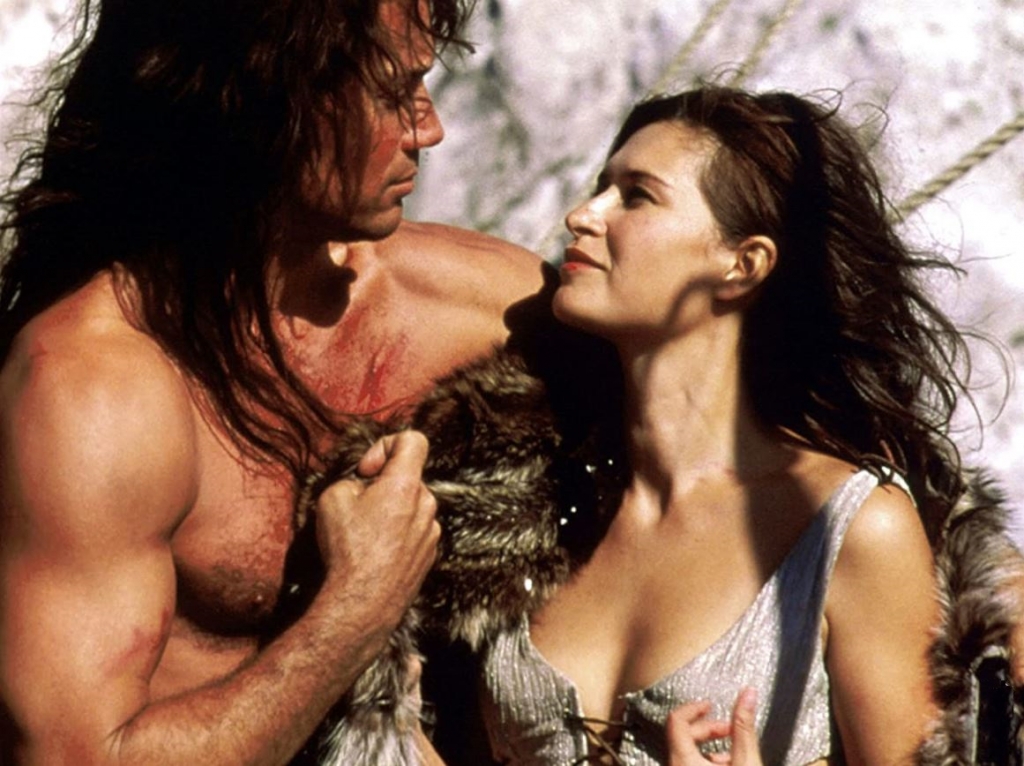
Constant humorous quips, over serious exposition of ancient prophecy, the appearance of goofy, comic relief characters (Harvey Fierstein’s Juba), and playful, lighthearted musical cues all support that the film is going for a pulpy, comic book tone meant to create pure escapism, nothing more.
In this regard, the film is a rousing success, and there’s fun to be had.
The main ingredient holding all of this together is Kevin Sorbo, possibly the only actor at the time, other than perhaps Jean-Claude Van Damme, who could fit so flawlessly into the final product.
On the other hand, Kull the Conqueror is a complete failure if compared to the original script, which was highly sexual with dark, violent themes. This was more in line with Robert E. Howard’s original material. “This was a mature, highly-praised script,” said screenwriter Pogue. But the process of trying to appease Sorbo’s younger Hercules audience whittled the script down to what Pogue calls “a kiddie adventure, which it even fails at.”
According to Pogue, Sorbo rejected the idea of an R-rated picture and even voiced concern that the female roles overshadowed his own.
This left Akivasha and Zareta as little more than stereotypes: the evil witch and the damsel in distress.
In addition, the film wanted to be bigger than its simple, familiar script would allow.
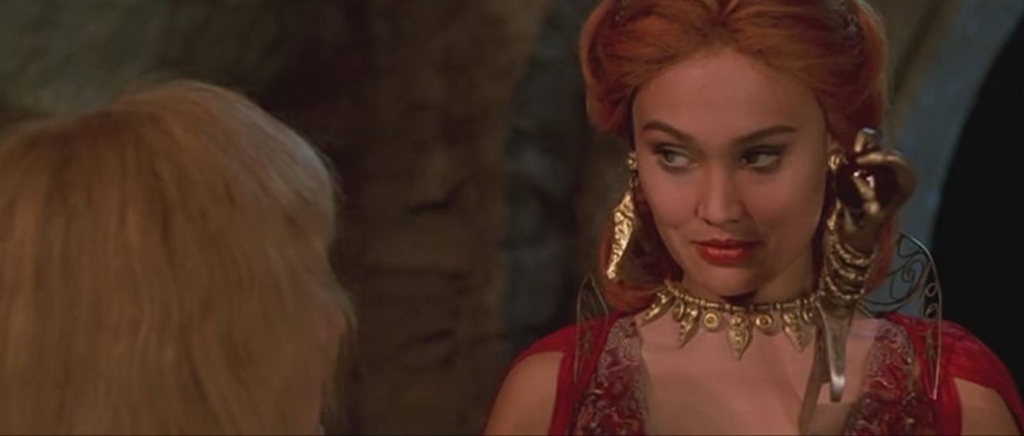
Some aspects of the film are admirable.
Director of photography Rodney Charters chose to shoot with Super 35, allowing for lower levels of light to give the film a transporting, firelight realism to show how the time period of Kull would have actually looked. Costumes, the water sequences, and set pieces like the Isle of Ice created with giant tip tanks and water tanks are all big Hollywood stuff.
But the hollowed-out script and complete erasure of any real danger and violence in what is supposed to be a dangerous and violent world left Kull the Conqueror feeling like a continuation of Sorbo’s Hercules TV movies that preceded the series (even the trailer feels like a commercial for an upcoming Hercules episode).
This no doubt led to a feeling of “there’s nothing to see here” upon the film’s release.
In the aftermath of Kull, Sorbo would have continued success on Hercules until 1999, and again for five seasons on the adventurous space drama Andromeda in 2000.
Sorbo has since appeared in a steady stream of faith-based, family films, including a big hit in 2014 with God’s Not Dead alongside Dean Cain. His feature film directorial debut in 2017, Let There Be Light would more than double its small budget at the box office, but a superstar career for Sorbo on the big screen would never materialize.
Looking back, Pogue claims that Sorbo had too much say on Kull the Conqueror.
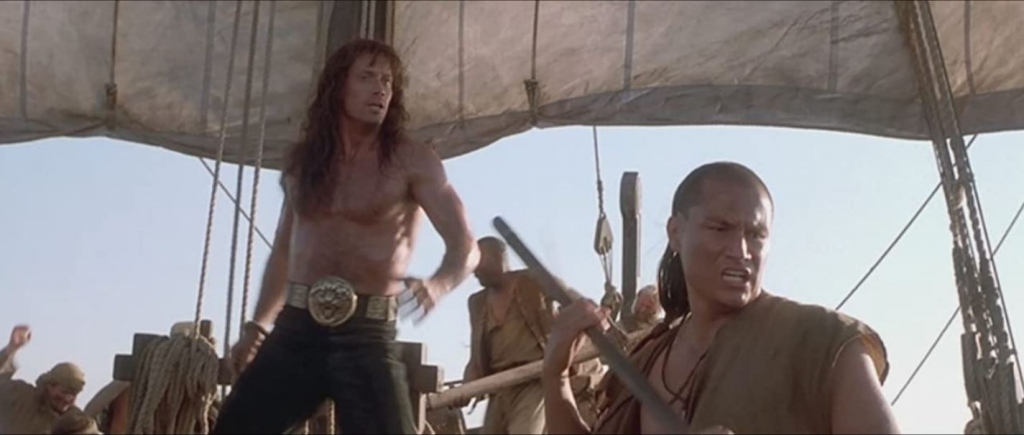
This left his original script so diminished that he flat out refers to Kull as a “disaster” that lost its “poetry, panache, and power,” (he says the same thing about his DragonHeart). In a perfect world, Pogue says that screenwriters “would have the same power that they do in the theater. You’d get better movies.” He’s probably right.
But the theater doesn’t work with the tens of millions of dollars that a Hollywood production works with.
With that much money on the line, unfortunately, there’s bound to be too many hands in the cookie jar (in classic Hollywood fashion, according to Sorbo, the two people in charge of marketing for Kull the Conqueror were fired).
In the case of Kull the Conqueror, too much money made a studio play it too safe, relying on a rising star’s small screen familiarity instead of banking on his big-screen possibility.
If only Arnold would have donned the loincloth for Conan the Conqueror instead of getting pregnant in Junior.



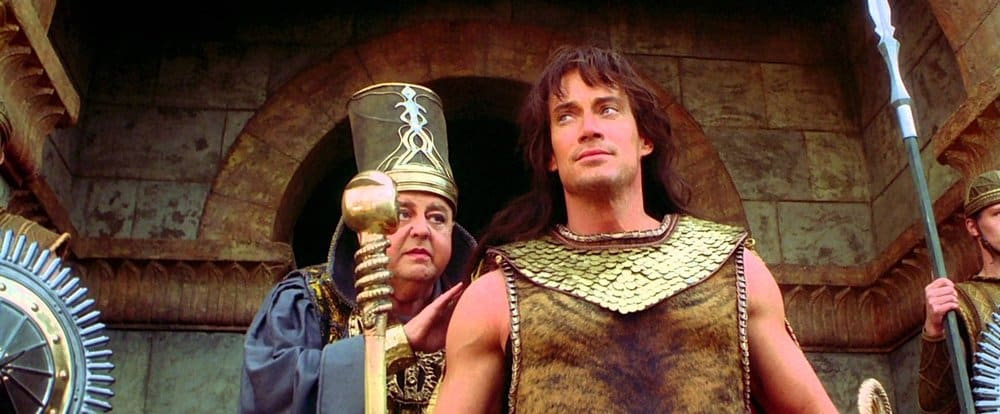

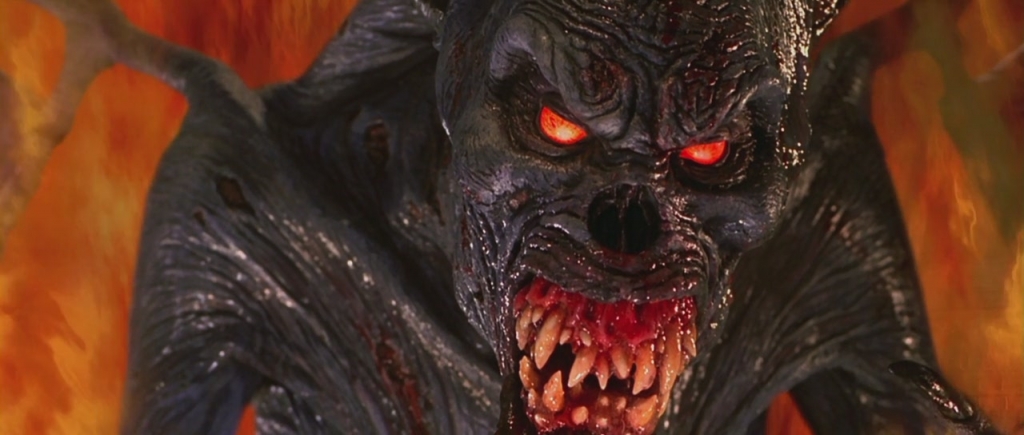
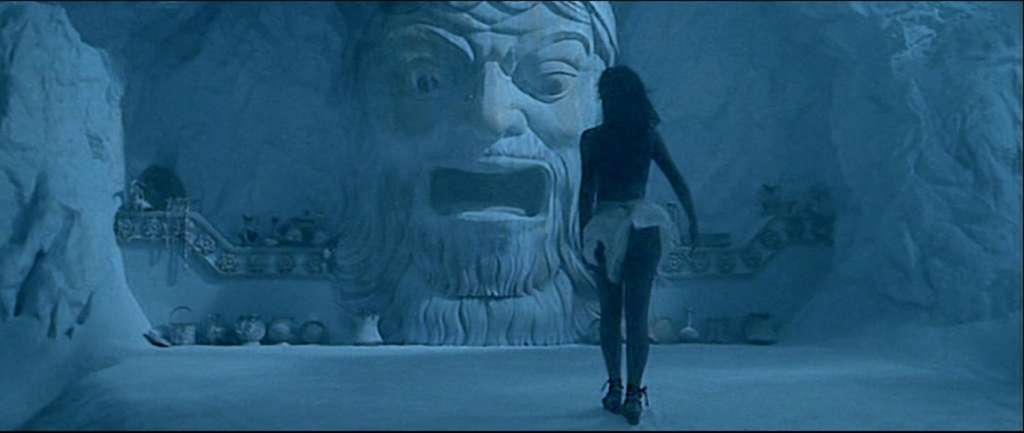











Follow Us!